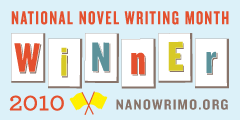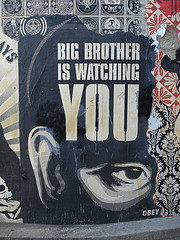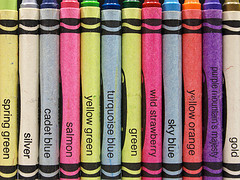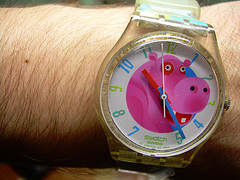Potential Assignment Sequence
August 9, 2023
These posts not only help me figure things out now, but they will also help me at the beginning of next term when I assess how things went and make changes for the Spring semester. So if you’re interested, read on to see what I’m thinking.
Tentative Assignment Sequence
Yesterday I struggled mainly with the recommendation report focus and my desire to connect the major assignments so that they build on one another in ways that students understand. I could just say something like, “Trust me. These are related.” It’s better though when students can see and understand the connection. That “Trust me” stuff only goes so far. And honestly, I need their trust in other areas more than I do in believing in the connections among the assignments. (Specifically, in the ungrading system. But that’s another post for another day.)
Following all the thinking yesterday, I’ve come up with these series of major assignments:
| Unit/Module | Major Assignment(s) | Other Activities to Include |
|---|---|---|
| Foundational Information | Analysis of Online Resources (from Your Field?) | |
| Usability |
|
??? |
| Project Management |
|
Meeting Minutes |
What to Do about Specific Focus Areas & Groups?
I’m still trying to figure out how to deal with groups and the topics of these pieces. The major issue is whether to have students
- focus on their own major/field/discipline/career goals (however it’s defined).
- focus more generally on their college’s area (e.g., Engineering, Science, Agriculture & Life Sciences).
- focus on anything they like (which I fear is too open and could result in analysis of random and likely off-topic sites).
The group composition is the key here. If groups are completely mixed, it will be harder to choose topics for the recommendation report. For instance, if I’m an Ag major, I’m not going to have much connection to a website on assembly language, chosen by and Electrical Engineering major. If it’s wide open, I’m likely to get coffee house websites or local hair salon websites. That feels far away from students’ fields. So far away that it borders on busy work. This is a major issue to figure out.
Restructuring for More Group Collaboration and Coordination
I like the The Writing Commons structure of having a problem-solution definition project feed into the recommendation report (as I mentioned in the last post). Students write their problem-solutions, and then they develop a pitch based on that problem-solution that they present to their group members. Group members then choose among the presented problems of the group members for the topic of their recommendation report (and related documents).
To implement a similar assignment arc, I’ll need to rearrange the course structure in the template a little. I want students meeting and interacting with their groups BEFORE they have to decide on their recommendation report focus. Not only would it allow them to get to know one another before it is critical to their work, but it would also give them support as they work on their second projects. I’m seeing them working as a peer review group on the Usability unit and then moving to collaborative writing for the Project Management Unit.
Beyond the collaboration angle, I’m worried about the jam-packed end to the semester in the existing template. Here’s what it looks like as is:
| Week | Assignments Due |
|---|---|
| Week 10 | Meeting Minutes |
| Week 11 | Proposal Draft |
| Week 12 | Progress Report & Proposal Final Version |
| Week 13 | Recommendation Report Draft |
| Thanksgiving Break | No work due |
| Week 14 | Recommendation Report Draft 2 |
| Week 15 | Recommendation Report Final Version (by end of exam week) |
I have multiple concerns about this schedule. First, I don’t think it’s reasonable to have major drafts and final versions due every week for the last third of the term. These are juniors and seniors for the most part, and they are all busy with major projects in all their courses. Many of those courses are far more important to them than my tech writing course (like their in-major senior capstones, for instance). I know this is a group project, so there is less work than individual projects. Still it feels far too crowded for me.
Beyond that, I readily admit that I am not superwoman. How in the world am I supposed to keep up with feedback on all of that for 4 classes of 22 students?! I’m in favor of plenty of feedback, but if I can’t keep up with this schedule, I’m hurting students—and trust me, I know I cannot keep up with that schedule.
That schedule also violates some working guidelines that I have been using the last few years when scheduling course work and my workload. Most importantly, I do not collect drafts (early or final) to respond to over Thanksgiving Break or Spring Break. That decision has allowed me to take a break and come back ready to finish out the course.
I also allow unlimited revision until the end of the grace period (usually the last Friday of classes). That means I could need to provide feedback on these documents even more times than are listed. I strongly believe in risk-free drafts that students can revise as much as needed. Even if a small handful need revision chances on these documents, it is going to add even more to my workload. I don’t think it’s reasonably possible. I’d rather start the collaborative writing earlier to have a better pace on the writing for the students and feedback for me.
Finally (yes, I have one more thing to say), I use ungrading that allows students to meet contract-style expectations to earn their grades. For instance, they need to earn a Complete on all of the major projects in order to earn an A in the course. In my system, the final exam is an optional Performance Review, in which they review their work during the term and can then argue for a higher grade than the number of Completes they have earned. They could argue for a lower grade too, but students are not crazy. The final is an important part of my system, so I don’t want to drop it. Nor do I want to pile it on top of the other work they are doing for the course. So this too means that I need to slide the work back in the term.
The downside of shortening time on earlier units would seem to be that students will have less time to learn those concepts. I don’t think that is an issue however. I’m setting up the sequence with the UX unit feeding into the Project Management unit and with the foundational information serving as the basis for their analysis of the UX document and of their recommendation report. Students will spend slightly less time during the opening weeks, but they will work with those concepts all term long. They are literally the foundation of every project they will complete.
And so….
That’s where I’m at now. I still need to figure out how I want to arrange students in groups, which matters in deciding the ultimate focus of the assignments.
I also have to figure out how the grace period (or late policy) is going to work for all these assignments. It has to be adjusted for the group work. I can’t have a single student’s decision to use the grace period impact an entire group’s progress. I know it means that I have to have different grace periods for different work. The big challenge is figuring out how to set that up, and the even bigger challenge is finding a way to make the system clear to students. I’ve had too many students in the past who get confused when different tasks have different grace periods. I need to figure out how to make it as clear as possible.
Those two tasks will wait until later however. That’s enough progress for today.









